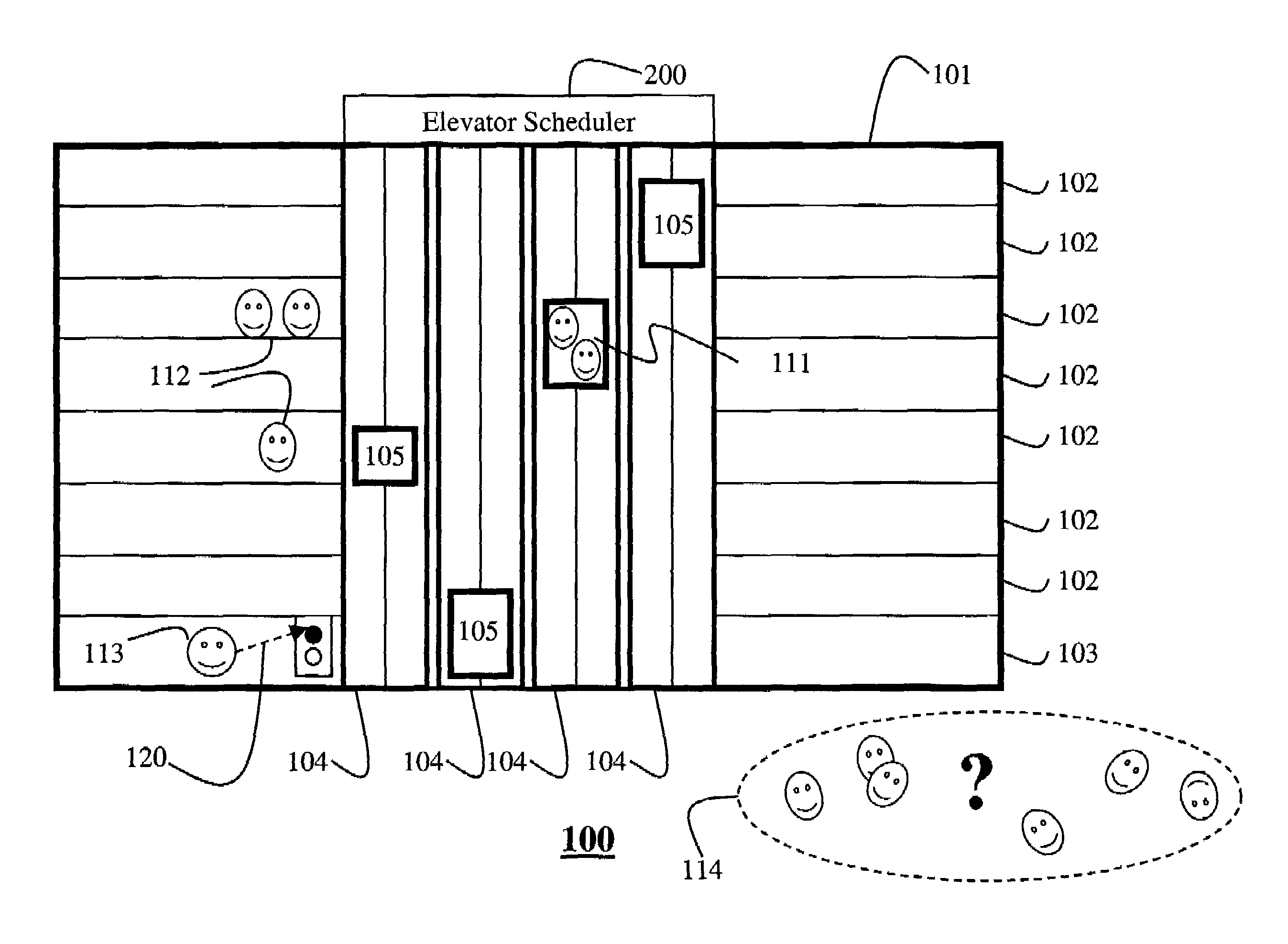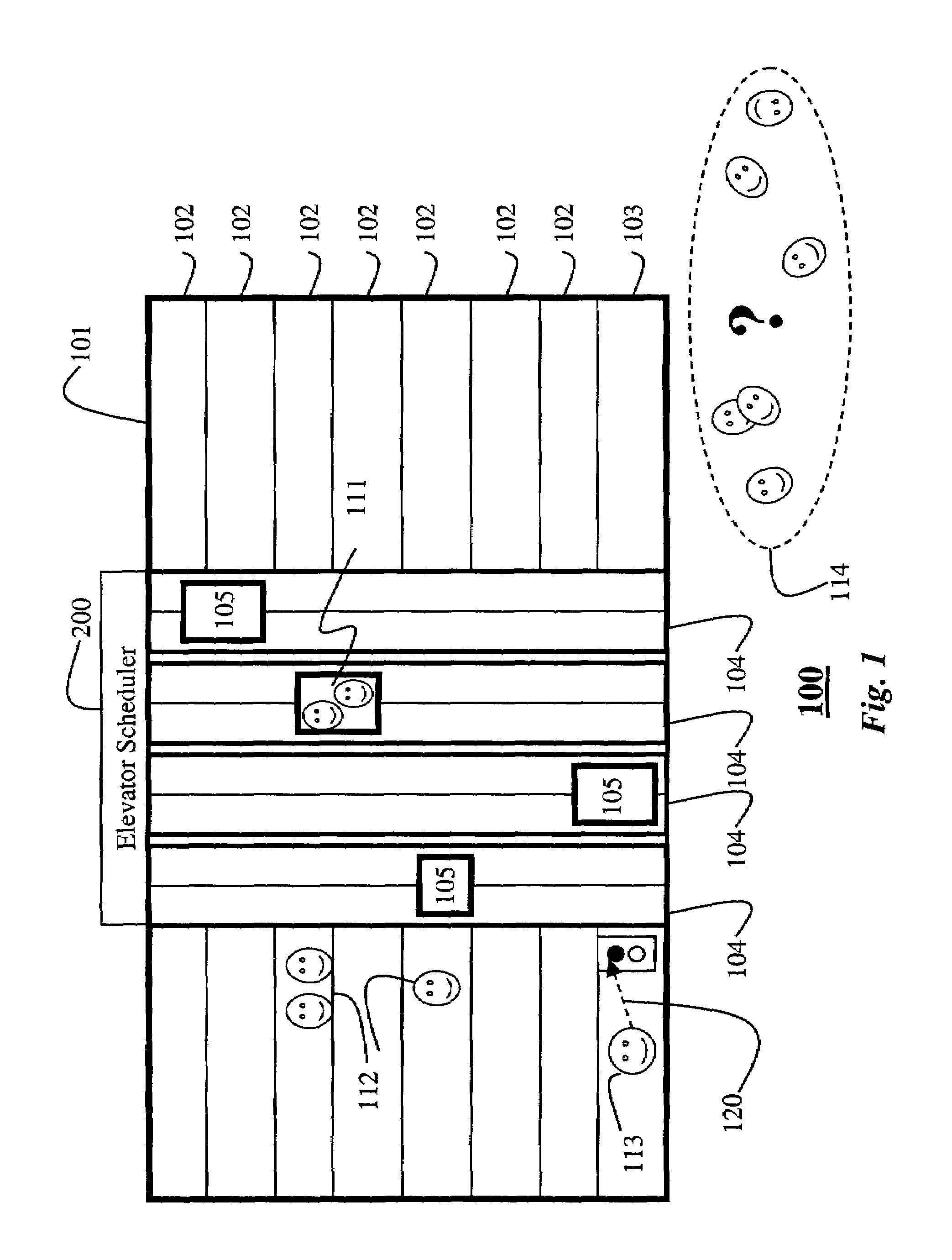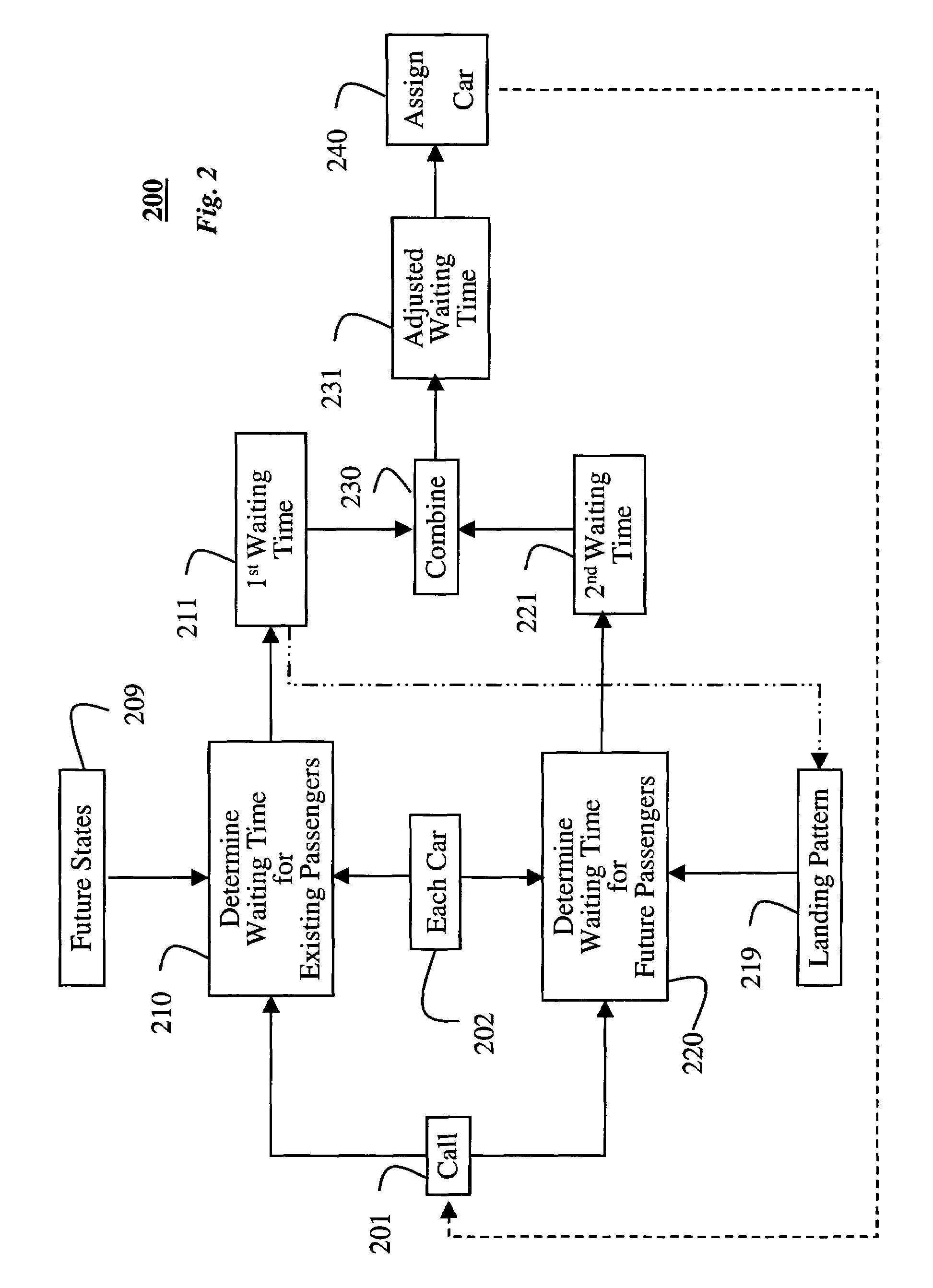Method and system for scheduling cars in elevator systems considering existing and future passengers
- Summary
- Abstract
- Description
- Claims
- Application Information
AI Technical Summary
Benefits of technology
Problems solved by technology
Method used
Image
Examples
Embodiment Construction
System Structure
[0017]FIG. 1 shows an elevator scheduler 200 according to our invention for a building 101 with upper floors 102, a main floor 103, elevator shafts 104, elevator cars 105. The main floor is often the ground or lobby floor, in other words the floor where most passengers entering the building mainly arrive.
[0018]For the purpose of our invention, passengers are formally classified into several classes according to variables that describe what is known about the passengers. The variables introduce uncertainty into the decision-making process of the elevator scheduler. The classes are riding, waiting, new and future passengers.
[0019]For each riding passenger 111, the arrival time, the arrival floor, and the destination floor are all known. The riding passengers are in cars, and no longer waiting.
[0020]For each waiting passengers 112, the arrival time, the arrival floor, and the direction of travel are known. The destination floor is not known. A car has been assigned to s...
PUM
 Login to View More
Login to View More Abstract
Description
Claims
Application Information
 Login to View More
Login to View More - Generate Ideas
- Intellectual Property
- Life Sciences
- Materials
- Tech Scout
- Unparalleled Data Quality
- Higher Quality Content
- 60% Fewer Hallucinations
Browse by: Latest US Patents, China's latest patents, Technical Efficacy Thesaurus, Application Domain, Technology Topic, Popular Technical Reports.
© 2025 PatSnap. All rights reserved.Legal|Privacy policy|Modern Slavery Act Transparency Statement|Sitemap|About US| Contact US: help@patsnap.com



